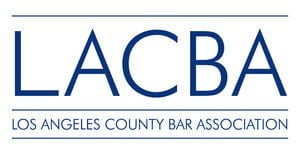California’s Three Strikes Law and Proposition 36
Pretty much everyone has heard of California’s three strikes law, which specifies tough mandatory sentences for habitual offenders. But is understanding this law as simple as “three strikes and you’re out?”

California voters didn’t think so — at least not in 2012, when they overwhelmingly approved Proposition 36, bringing major reforms to the state’s three strikes law as originally enacted in 1994.
When the Golden State’s so-called Three Strikes Law went into effect in 1994, proponents of the legislation were cheered by the fact that repeat offenders would be – in their minds – properly punished at last. But the law’s opponents called three strikes harshly anti-defendant and fiscally irresponsible. The three strikes or “habitual offender” law was enacted at a time when crime seemed at a high point in California, and the law’s passing significantly increased the prison population throughout the state.
Unlike similar repeat offender laws in other states, California’s 1994 three strikes law specified lengthy mandatory sentences not only for individuals convicted of a third serious or violent felony, but also for a non-serious/non-violent third offense. Many considered the law unnecessarily severe, which is one of the leading reasons it was finally amended some 18 years later in 2012, via Proposition 36.
The origin of three strikes
California’s three strikes law, enacted in 1994, put additional pressure on the state’s already overcrowded and underfunded prison system. (San Quentin Prison)
The original habitual offender law was passed in response to the 1992 murder of Kimber Reynolds (age 18) and the 1993 murder of Polly Klaas (age 12). Both young women were killed by men who had a track record of prior violent crime convictions, yet they had been repeatedly paroled or released back into the general population.
Reacting to these tragic and widely publicized crimes, officials and voters passed a law which stated that a defendant who was convicted of any felony with two or more prior strikes to their name would serve a state prison term of 25 years to life.
Proponents of this law expected it to substantially reduce crime, although there was never any real evidence that this happened. But it did result in overcrowding of the already strained California prison system, an increased burden on taxpayers due to the need to care for aging offenders, and a system that left very little room for offender rehabilitation.
And because non-violent felonies were included in the original version of the three strikes law, it was possible for a three-time shoplifter to receive a longer sentence than a first-time murderer. It was an irrational system that resulted in a great deal of unnecessary incarceration, particularly among minority and non-violent offenders.
Making three strikes right
Finally, in November 2012, California voters passed Proposition 36, which changes many aspects of three strikes that had long been considered unfair and possibly unconstitutional. I was involved with Families to Amend California’s Three Strikes (FACTS), one of the organizations that helped push through Proposition 36.
In particular, Prop 36 permits a mandatory 25-to-life sentence to be imposed only if the new felony conviction is “serious” or “violent”. This change enabled some 3,000 convicted felons who were serving a life sentence under the three strikes and whose third offenses were non-violent, to petition the court for reduced sentences.
According to a San Francisco Chronicle article penned a year before the proposition was passed, shortened sentences or the release of non-violent offenders would save the State of California some $150 to $200 million each year.
However, the provisions of Prop 36 continue to protect the public from violent offenders, maintaining the 25-to-life sentence third strike penalty for felons who:
- Are convicted of a non-serious or non-violent third strike, when their prior convictions are for rape, murder, or child molestation.
- Are convicted of certain non-serious, non-violent sex or drug offenses.
Also, a sentence of 25 years to life can still be imposed for third strike convictions involving:
- Possession for sale, sale or transportation, or manufacturing of cocaine, heroin, methamphetamine, or related substances.
- Felony sex offenses or any felony that results in mandatory registration as a sex offender.
- The use of firearm, or if the defendant was armed with a firearm or deadly weapon, or intended to cause intended to cause great bodily injury to someone.
- A prior offense that appears on a list of particularly serious crimes.
Second strikes also carry enhanced sentences
The three strikes law is well known, but many people are not aware of the sentencing enhancements associated with the second strike. When a defendant is convicted on a second felony charge, the incarceration sentence is double the base term for that offense. But the Board of Parole Hearings is now conducting second striker hearings at the halfway point of the sentence (which is equal to the base term), to determine parole suitability for a chance at release.
Facing a third strike
Every felony case is different and a third strike isn’t necessarily a lost cause. Only an experienced criminal defense attorney can provide the accused with a full understanding of the particulars of their situation, determine the viability of various legal defense strategies, and guide the accused towards the best possible outcome for their case.
Parole for three strikes offenders
The original three strikes law was passed in 1994, which means that the first third-strikers sentenced to 25-to-life terms will start to become eligible for parole hearings in 2018. I have a great deal of compassion for, and experience helping lifers prepare for parole suitability hearings with the California Board of Parole Hearings.









